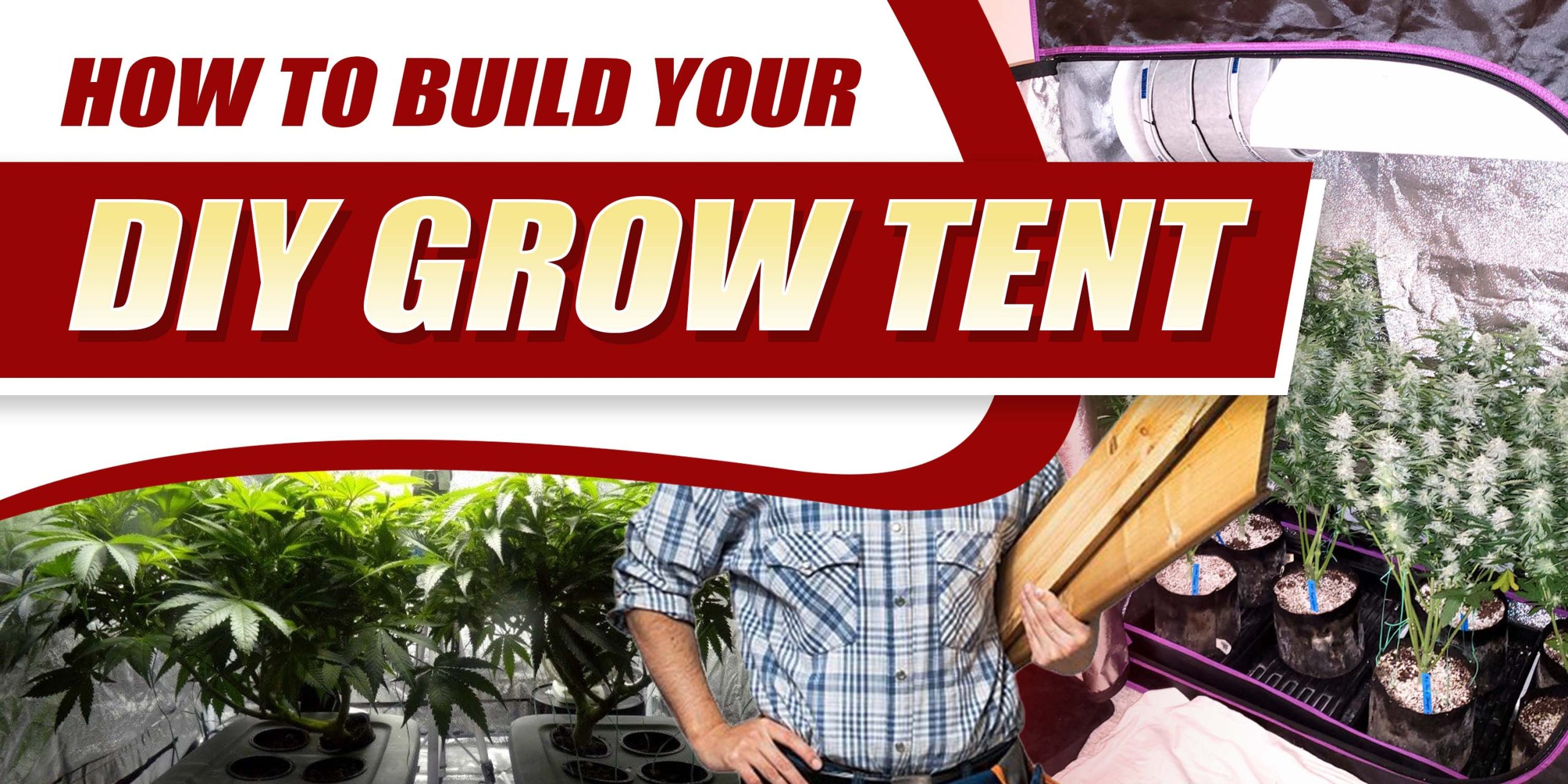



Table of Contents
Toggle
Building your own grow tent offers numerous advantages over purchasing a pre-made option. Firstly, DIY grow tents are highly customizable, allowing you to design the perfect environment for your plants based on factors such as size, lighting, and ventilation. Additionally, constructing a grow tent from scratch can be a rewarding and educational experience, providing insights into plant biology and environmental control. Furthermore, DIY grow tents are often more cost-effective than pre-made alternatives, as you can select affordable materials and tailor the design to suit your budget.
Choosing the Right Location
Selecting the optimal location for your DIY grow tent is crucial for the success of your indoor garden. Ideally, choose a space that receives ample natural light or can accommodate supplemental grow lights. Ensure easy access to electrical outlets and water sources, as well as adequate ventilation to prevent heat buildup.
Determining Size and Dimensions
Before diving into construction, carefully consider the size and dimensions of your grow tent based on the number and type of plants you intend to grow. Measure the available space to ensure a proper fit, and plan for sufficient clearance around the tent for maintenance and airflow.
Selecting Suitable Materials
When selecting materials for your DIY grow tent, prioritize durability, light reflectivity, and insulation. PVC pipes or metal rods are popular choices for the frame due to their strength and stability, while Mylar or white plastic sheeting provides optimal light reflection. Additionally, consider adding layers of insulation such as foam board or bubble wrap to regulate temperature and humidity levels within the tent.
Reflective Material
The choice of reflective material for your DIY grow tent is critical for maximizing light efficiency and promoting healthy plant growth. Mylar is a popular option due to its high reflectivity and durability, but alternatives such as white plastic sheeting or reflective paint can also yield satisfactory results. Whichever material you choose, ensure it is lightweight, tear-resistant, and easy to clean for long-term use.
Frame Material
When it comes to selecting materials for the frame of your DIY grow tent, durability and stability are paramount. PVC pipes are lightweight, affordable, and easy to work with, making them an excellent choice for novice builders. Alternatively, metal rods or conduit pipes offer greater strength and longevity, albeit at a slightly higher cost. Whichever material you choose, ensure it is resistant to rust and corrosion to withstand the humid environment inside the tent.
Insulation Material
In addition to reflective and frame materials, insulation plays a crucial role in maintaining stable temperature and humidity levels within the grow tent. Adding layers of insulation such as foam board or bubble wrap helps to minimize heat loss and fluctuations, creating a more consistent and comfortable environment for your plants. Pay close attention to sealing any gaps or seams in the insulation to prevent heat leaks and maximize energy efficiency.
Now let’s dive into the construction process of building a grow tent from start to finish.
Step 1: Frame Construction
Start by cutting the PVC pipes to the desired lengths using a hand saw. Remember to account for vertical clearance to accommodate plant growth. Utilize corner and T-fittings to assemble the frame structure, ensuring stability and rigidity. Incorporate a central cross fitting in the roof section to support additional equipment, such as grow lights and fans.
Step 2: Tent Enclosure
Once the frame is assembled, proceed to cover the tent with panda film. Begin by wrapping the film tightly around the PVC frame, securing it in place with duct tape. Ensure a snug fit and minimal overlap to prevent light leakage, particularly along seams and openings. Install Velcro fasteners for convenient access to the tent interior, facilitating maintenance and inspection.
Step 3: Equipment Installation
Mount LED grow lights to the designated fixtures on the tent frame, following manufacturer instructions for optimal positioning and alignment. Ensure the power cord is routed through a small opening in the roof to prevent light leakage. Position ventilation fans strategically to promote airflow and temperature regulation within the grow space. Integrate carbon filters to neutralize odors and maintain discretion, especially in residential or confined environments.
Now that your DIY grow tent is up and running, proper maintenance is essential to ensure the health and vitality of your plants. Regularly monitor temperature and humidity levels using a digital hygrometer and thermometer, and adjust ventilation and lighting as needed to maintain optimal growing conditions. Check for signs of pests or disease regularly, and treat any issues promptly to prevent spread and minimize damage to your plants. Additionally, clean and sanitize the interior of the grow tent periodically to remove dust, debris, and pathogens that can harbor pests and disease.
While DIY grow tents offer numerous benefits, it’s essential to weigh the costs against those of pre-made options to determine the best fit for your needs and budget. While pre-made grow tents offer convenience and ease of assembly, they often come with a higher price tag compared to DIY alternatives. By sourcing affordable materials and building your own grow tent, you can save money upfront and customize the design to suit your specific requirements. Additionally, DIY grow tents allow for greater flexibility and creativity in design, enabling you to experiment with different sizes, shapes, and features to create the perfect indoor garden space.
Despite your best efforts, you may encounter occasional challenges when growing plants in a DIY grow tent. From pest infestations to nutrient deficiencies, addressing common issues promptly is key to maintaining a healthy and thriving indoor garden. Keep a close eye on your plants for signs of stress or disease, and take proactive measures to identify and resolve any issues before they escalate. Consult online resources, gardening forums, or local experts for guidance and support if you encounter problems beyond your expertise. With patience, persistence, and a bit of trial and error, you can overcome obstacles and enjoy a bountiful harvest from your DIY grow tent.
In conclusion, building a DIY grow tent is a rewarding and practical endeavor for gardeners of all skill levels. By following the step-by-step instructions provided in this guide and selecting high-quality materials, you can create a customized indoor garden space that nurtures healthy and abundant plant growth. Whether you’re growing herbs, vegetables, flowers, or fruits, a DIY grow tent offers the perfect solution for cultivating plants year-round in any climate or environment. Get started on your DIY grow tent project today and experience the joy of gardening from the comfort of your own home.
Q: Can I use natural sunlight instead of artificial grow lights in my DIY grow tent?
A: Yes, you can use natural sunlight as the primary light source for your DIY grow tent. Just make sure to position the tent in a location that receives ample sunlight throughout the day.
Q: Do I need to use pesticides or chemicals to keep pests away from my plants in the grow tent?
A: No, you can use natural pest control methods such as neem oil, insecticidal soap, or beneficial insects like ladybugs to keep pests at bay without resorting to harmful chemicals.
Q: Can I grow any type of plant in a DIY grow tent, or are there specific plants that are better suited for indoor cultivation?
A: While you can grow a wide variety of plants in a DIY grow tent, some species may require specific environmental conditions or grow space. Research the light, temperature, and humidity requirements of your chosen plants to ensure success.
Q: How do I prevent mold and mildew from developing inside my DIY grow tent?
A: To prevent mold and mildew, ensure proper ventilation and air circulation within the grow tent. Use a dehumidifier if necessary, and avoid overwatering your plants to minimize excess moisture.
Q: Can I grow plants hydroponically in a DIY grow tent, or do I need soil?
A: Yes, you can grow plants hydroponically in a DIY grow tent using nutrient-rich water instead of soil. Hydroponic systems allow for precise control over nutrient levels and water distribution, resulting in faster growth and higher yields.



Best Selling
Feminized Seeds
Regular Seeds
Customer Help
Contact Us
WE SELL MARIJUANA SEEDS IN THE USA

Are You 18 Or Over?
YesOr
No By clicking yes, you certify that you are over 18. By using this website, you agree to our legal disclaimer.